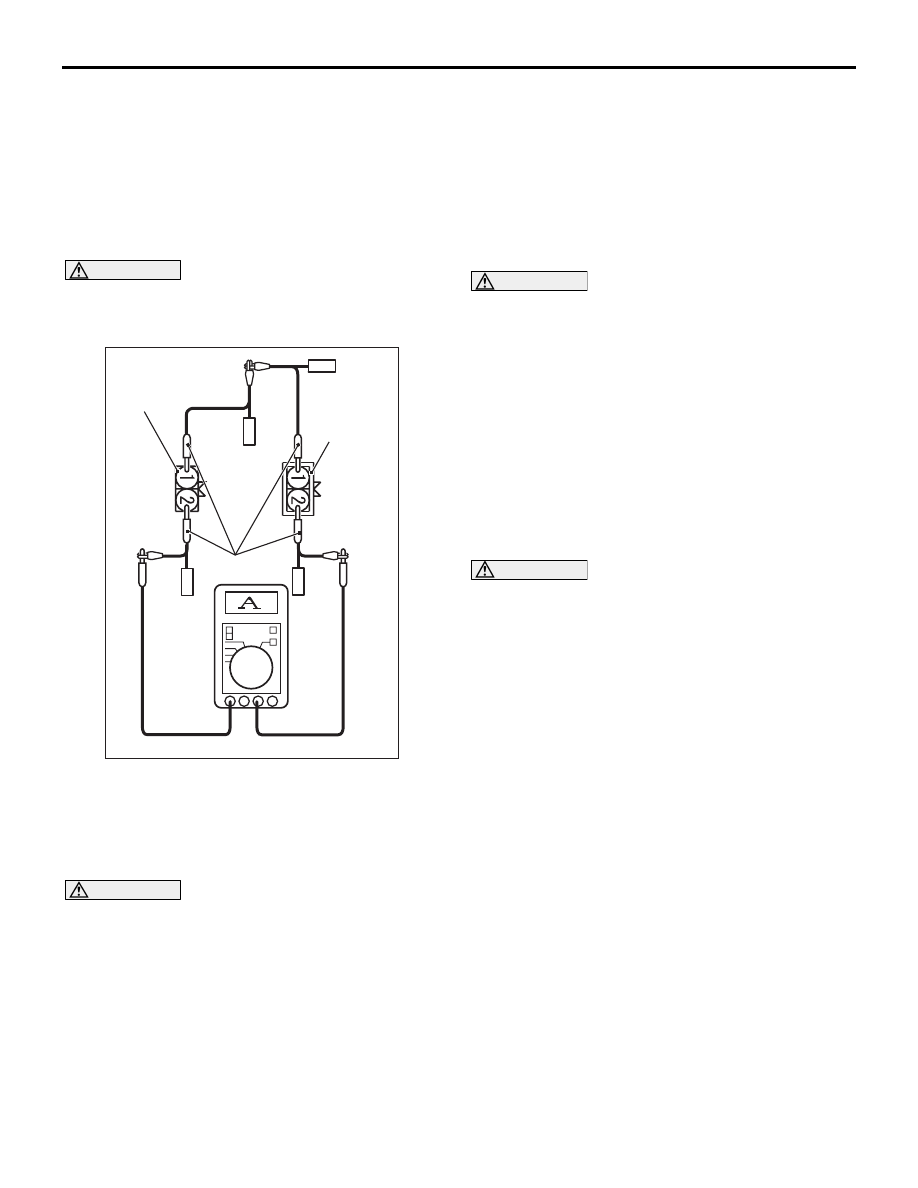Mitsubishi L200. Manual - part 434

ON-VEHICLE SERVICE
ANTI-SKID BRAKING SYSTEM (ABS)
35B-57
ON-VEHICLE SERVICE
WHEEL SPEED SENSOR OUTPUT
CURRENT MEASUREMENT
M1352032800065
The relevant wheel, on which the wheel speed sen-
sor is fitted, should be free to run.
1. Remove the wheel speed sensor connector to be
checked.
CAUTION
For precise measurement, do not connect to the
wheel speed sensor-side connector and the wir-
ing harness side connector terminal No.1.
ACB00833
MB991709
AB
Wheel speed
sensor
connector
Harness
connector
2. Use the special tool test harness (MB991709) to
connect a multimeter between the wheel speed
sensor-side connector and the wiring harness
connector terminal No.2.
3. Turn the ignition switch to the "ON" position.
CAUTION
Do not rotate the wheel too quickly. Output cur-
rent changes significantly as the wheel speed
detection magnetic encoder comes near or goes
away from the wheel speed sensor.
4. Rotate the wheel, on which the wheel speed
sensor is fitted, quite slowly to measure the output
current with the multimeter.
Standard value: 5 to 9 mA or 11 to 17 mA
5. If the measurement is not within the standard
value, or the output current does not change in
proportion to the wheel rotation, replace the wheel
speed sensor (Refer to
HYDRAULIC UNIT CHECK
M1352001701106
CAUTION
• The roller of the braking force tester and the
tyre should be dry during testing.
• When testing the front brakes, apply the park-
ing brake. When testing the rear brakes, stop
the front wheels with chocks.
1. Jack up the vehicle. Then support the vehicle with
rigid racks at the specified jack-up points or place
the front or rear wheels on the rollers of the
braking force tester.
2. Release the parking brake, and feel the drag force
(drag torque) on each road wheel. When using
the braking force tester, take a reading of the
brake drag force.
CAUTION
To prevent damage to M.U.T.-III, always turn the
ignition switch to the "LOOK" (OFF) position
before connecting or disconnecting the M.U.T.-III.
3. Turn the ignition switch to the "LOCK" (OFF)
position and set the M.U.T.-III as shown in the
illustration.
4. After checking that the selector lever is in neutral,
start the engine.
5. Use the M.U.T.-III to force-drive the actuator.
NOTE: The ABS system will switch to the M.U.T.-
III mode and the ABS warning lamp will illuminate.
NOTE: When the ABS has been interrupted by
the fail-safe function, the M.U.T.-III actuator test-
ing cannot be used.